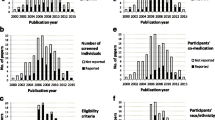Abstract.
Objective. As employment of different dose standards would be impractical and confusing, the aim of this article is to compare the defined daily dose (DDD) with some more recently proposed standards, namely, the minimum marketed dose (MMD), the equipotential dose (ED), the average daily dose (ADD), and the non-standard prescribed daily dose (PDD).
Methods.
Literature review, critical comparative analysis.
Results.
The DDD, defined by an independent scientific committee assisting the WHO Collaborating Centre for Drugs Statistics Methodology, has been employed in a large number of national and international comparative studies at the population level, usually as number of DDDs per 1000 inhabitants per day. However, the DDD can also be used at the individual level. The PDD, not being a standard unit, can be appropriately used in a second step to explain differences detected by the DDD methodology.
Conclusions.
1A globally accepted dose standard unit is important in drug utilisation studies, particularly if different investigations are to be compared. None of the alternatives seemed to offer any advantage over the DDD. Hence there is reason to advocate use of the DDD as the sole standard dose unit in all pharmacoepidemiologic studies.
A globally accepted dose standard unit is important in drug utilisation studies, particularly if different studies are to be compared [1]. As units of costs, packages or prescriptions are inadequate for obvious reasons, the defined daily dose (DDD) concept was introduced many years ago [2]. A DDD of a drug is defined by an independent scientific committee assisting the WHO Collaborating Centre for Drug Statistics Methodology, following an extensive review of the literature, as the assumed average daily dose of a drug for its main indication in adults [1, 3]. For comparative use the number of DDDs sold or prescribed is generally given as per 1000 inhabitants per day [1]. As such it has been used in a large number of studies and statistics on drug utilisation at the population level. However, the DDD may also be used at the individual level (see below).
Recently, some alternative standard dose concepts have appeared, such as the minimum marketed dose (MMD) [4], the equipotential dose (ED) [5] and the average daily dose (ADD) [6]. As employment of different dose standards would be impractical and confusing, the present report assessed the possible advantages and disadvantages of MMD, ED and ADD relative to those of the DDD. The non-standard prescribed daily dose (PDD) is also discussed.
Similar content being viewed by others
Author information
Authors and Affiliations
Additional information
Received: 12 May 1995/Accepted in revised form: 11 September 1995
Rights and permissions
About this article
Cite this article
Merlo, J., Wessling, A. & Melander, A. Comparison of dose standard units for drug utilisation studies. E J Clin Pharmacol 50, 27–30 (1996). https://doi.org/10.1007/s002280050064
Issue Date:
DOI: https://doi.org/10.1007/s002280050064




